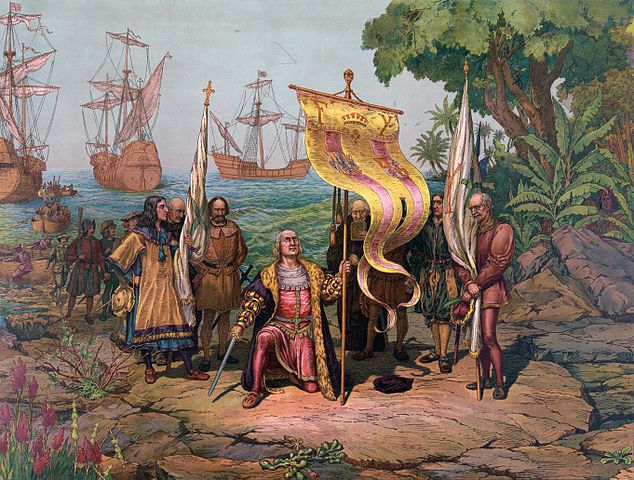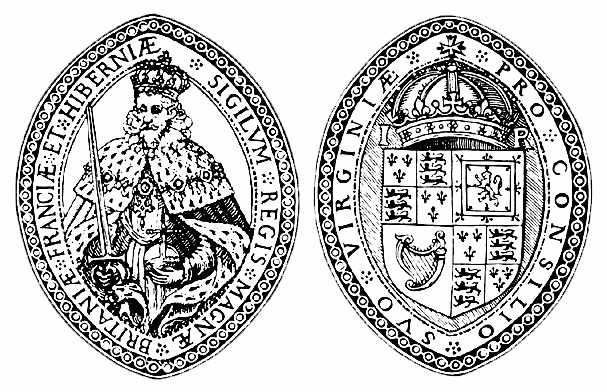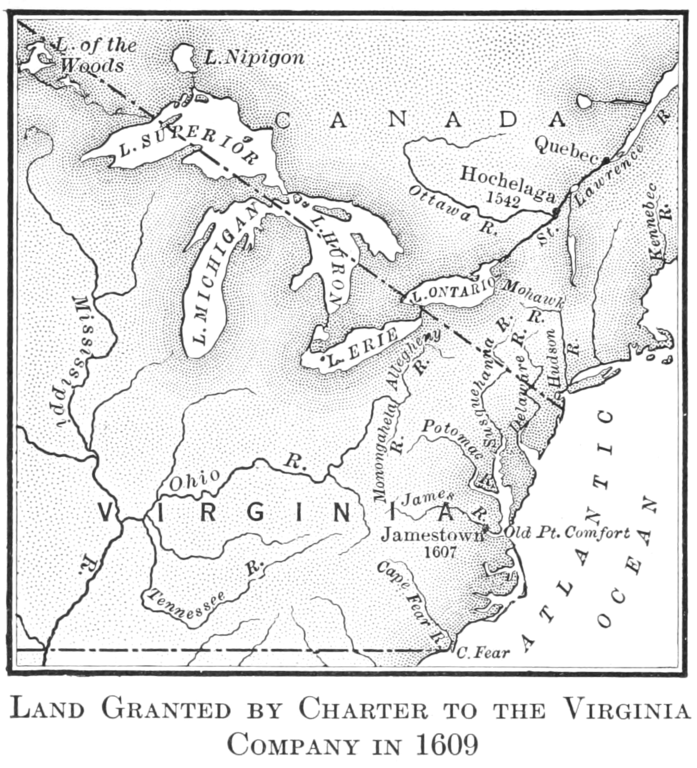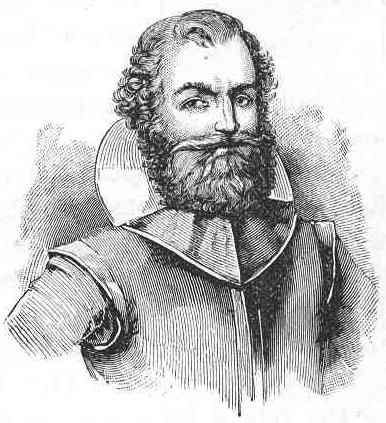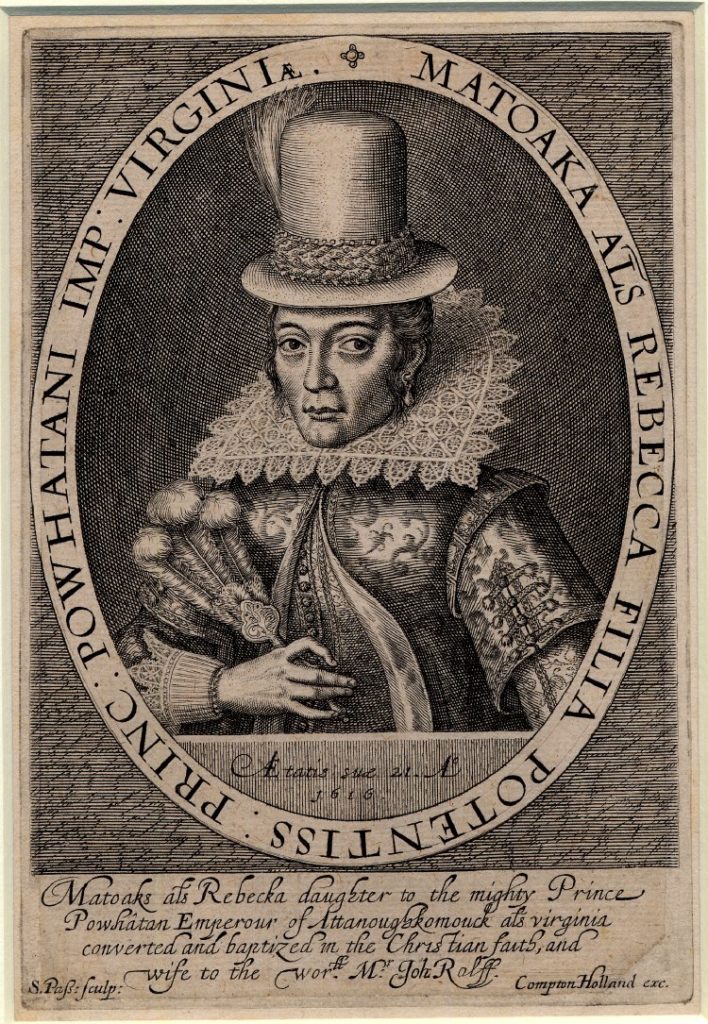To visit Jamestown is to head back to the very beginning of America as we know it today. Jamestown was the first permanent British settlement in the New World. Explorers from Portugal, France, Spain and the Netherlands had already been settling and exploring in the Americas, and Great Britain wanted a piece too.
There are 3 major spots to see when you want to visit Jamestown: Historic Jamestown (the actual site), Jamestown Settlement (living history museum) & First Landing Beach (if you have time). In total, I spent almost 2 full days across the 3 sites: 6 hrs at Historic Jamestown, 5 hrs at Jamestown Settlement, but only 30 minutes at First Landing Beach because I had a plane to catch!
Historic Jamestown is an active archaeology site and you’ll likely be able to see excavations in progress. The site was only recently discovered after centuries of believing it had been lost to erosion into the James River. Excavations and signs explain where things were located so you get a great sense of what the fort was like. There is a fantastic archaeology museum on site which exhibits some of the thousands of items that have been discovered in the last thirty years. You can also walk through the remnants of “New Towne” (still 400 years old!) that sprang up at the Fort once the colony began to grow.
Jamestown Settlement is a museum located near the actual site. It does a great job explaining the global factors which drove Britain to establish colonies in the Americas. It also has a living history section where you tour a Powhatan village, a recreation of the Fort (to scale!) and see replicas of the 3 ships that brought the colonists to America (also to scale!).
A fun extra – and free! – trip is to take the Jamestown-Scotland car ferry across the James River. You get a great view of the Historic Jamestown site and the ships at the Jamestown Settlement from the river perspective.
First Landing Beach is pretty self explanatory! Positioned around the edge of what the colonists named Cape Henry (after King James’ son), this is the spot the men first anchored to while trying to find where to establish their colony. It is a beautiful beach and the most popular one in all of Virginia, so if you go on a weekend get there early to get a parking spot!
Getting There
Location: South-East coast of Virginia
Transport: Nearest major airports are Norfolk, VA (ORF – 50 miles) or Richmond, VA (RIC – 45 miles)
Your best travel bet – and the most flexible – will be to rent a car. There are plenty of options at the airports and it’s very easy to get around the area.
Already have a good idea of the history of Jamestown? Then bypass the history lesson and Skip to the Trip!
Go West Young Man (very...VERY...west)
Towards the end of the Medieval period in Europe (13th/14th centuries), the feudal system was giving way to a more commercial system of trade and commerce. Individuals could promote their wares at the local markets and fairs and a growing urban class began to emerge.
The wealthy upper class learned they could further expand their fortunes by financing expeditions overseas for trade, often taking 50-75% of the profits by putting up the funding for the trip.
Portugal was the first nation to find a water route to India, but they had to go all the way around Africa to get there. Finding a western route to Asia was key. The Americas got in the way of a direct route to the Indies, but the precious metals, furs and other riches throughout those continents still made them a valuable find.
Always looking for better routes, new trade partners and exotic goods, explorers like Christopher Columbus and Vasco de Gama set out across the sea and returned with fortune and glory. Other nations like Spain, France and the Netherlands started trading and settling in the New World…despite the fact that a thriving Indigenous population had been there for millennia. The race to colonize was on.
Enter the Virginia Company of England
England wanted in on this action. Queen Elizabeth I, the “Virgin Queen”, supported exploration of the New World in the late 1500’s. At her suggestion, the English called their land in America “Virginia”.
The lost colony of Roanoke was the first attempt to settle in North America. Exploring the mysterious disappearance of that colony is definitely going to be a future trip!
Queen Elizabeth I’s successor, King James I was not discouraged by the failure at Roanoke but he wasn’t about to finance a journey himself. A popular option at the time was to set up joint-stock companies, which meant the public would invest in the venture and share in the reward (if any!).
In the early 1600’s “Virginia” encompassed the region from modern day North Carolina north to Canada and west to the Mississippi River. Today that area covers more than a dozen states!
In 1606 James granted a charter for exploration, trade & settlement in the New World. The Virginia Company was born. The Virginia Company had two divisions: the London Company and the Plymouth Company.
The Plymouth Company was assigned what we associate as “New England”. The London Company had the southern half, which is where our story begins.
1606: America or Bust!
On December 20, 1606, three ships departed England with 105 men on board. The ships were the Susan Constant, the Godspeed & the Discovery. In April 1607 they arrived on the shores of Virginia.
Captain Newport had been instructed to locate a site for the colony which had easy access to the sea but was also safe from attack by the Spanish to the south. After spending some time near the landing site, they eventually sailed up the river (which they named the James River) and picked a location (which they called “James towne”).
From this site, the colonists were to find riches and a route to the West Indies. Easy peasy!
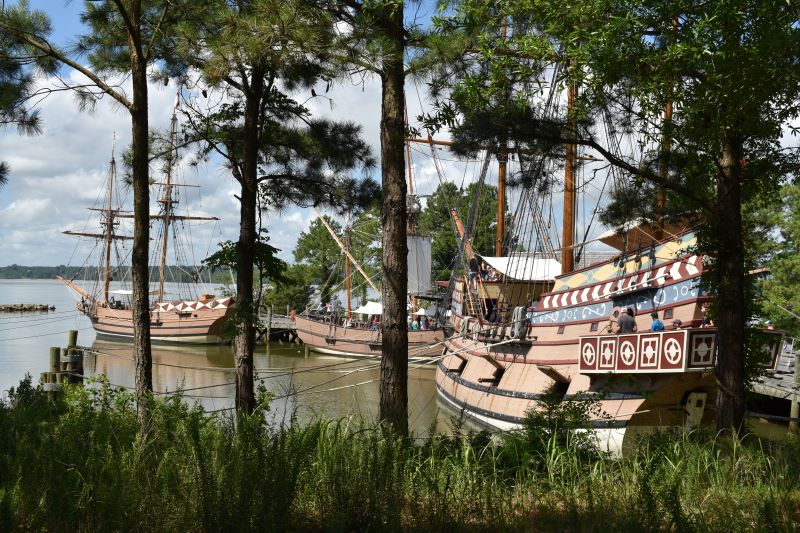
Why Did They Pick That Location for Jamestown?
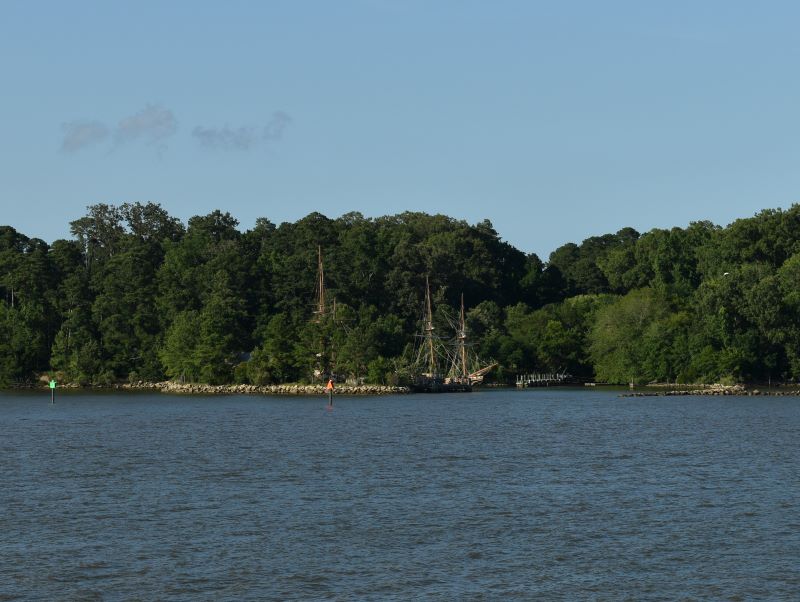

It’s still true today: Location. Location. Location. The site criteria the colonists were instructed to meet:
- Ships could anchor close to the shore. That helps with a quick getaway and for convenience in loading & unloading materials. The deep water also buoyed their hopes that the river would cut through the country and lead them to the West Indies.
- Protection from the Spanish. The James River is a bit tricky to navigate and it’s very curved, so colonists would be able to see Spanish ships coming up to attack well before they reached the colony.
- Protection from the Indigenous Americans. Jamestown is an island at high tide and it’s also very swampy in many places, so it is difficult to attack from land. That didn’t really hinder the Powhatan – they’d been here for a while to know their way around!
These natural protections were important as the first order of business was not to set up a fort and protective walls. The men were there to find gold and a route to the West Indies!
They did not anticipate the hostilities they encountered from the Powhatan. Within the first few days, the site was attacked and many were killed. so the palisade walls quickly went up as additional protection became necessary.
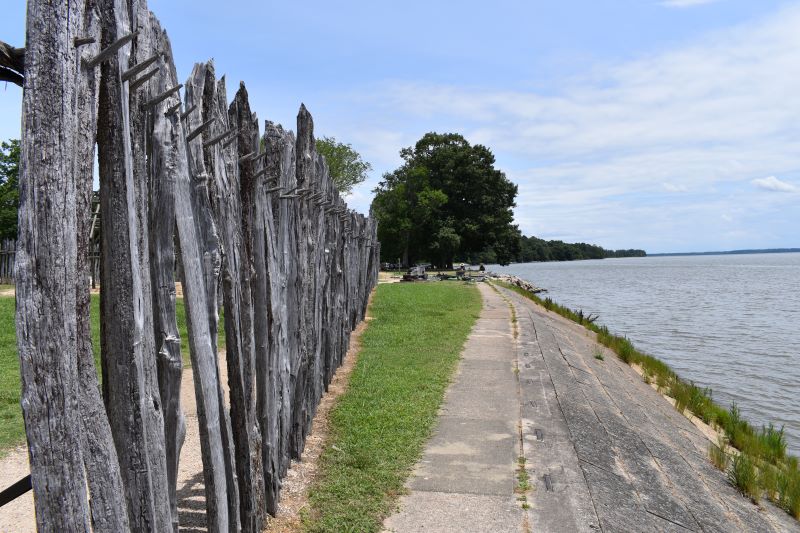
The site was well defended, but the protective swamps of the island turned out to be havens for disease and finding clean water was difficult. Even though Jamestown is 50 miles from the ocean, sea water would gradually make its way up river during tidal periods, so salty river water is thought to have been slowly poisoning the men as well. This was a rough time.
By the end of 1607, only 35 original colonists were still alive! The first re-supply ship arrived in January 1608 with 70 additional colonists. Their numbers included skilled blacksmiths, laborers, doctors, and a jeweler (they were still hopeful to find all that gold!).
Captain John Smith
John Smith arrived at Jamestown on the first ships as a prisoner, his braggart ways having rubbed the others the wrong way on the voyage. He was charged with mutiny by the Captain and thrown in the brig for a majority of the 4 month trip.
Upon landing at the site, sealed instructions sent over with the colonists named Smith as one of the governing council of the colony, so he had to be set free!
It was a good thing he was there, because he is credited with saving the colony in the early years. He negotiated with the Powhatan, ordered the first well to be dug at the site to find fresh water, and set the men to work. His famous quote is “He that will not work shall not eat.”

1609: The Worst Draught in 800 Years...

Exploration was the colony’s priority, but there is some contention among guides I spoke to as to how accurate the sentiment is that the gentlemen of the group refused to labor at the fort. The story goes that they felt they were “too important” to hunt and farm and that’s why the colony experienced what is known as “The Starving Time” from 1609-1610.
However, recent studies of tree rings have discovered that Virginia experienced the worst draught in 800 years from 1606-1612. This would explain why they were not able to establish significant farms initially. Not only that, but migration patterns of the sturgeon in the James River were affected, so the colonists couldn’t get enough food from the river either.
Records from the time, and evidence found in the last few years, revealed that the colonists had to resort to drastic measures to survive from 1609-1610: eating their horses, dogs, rats, shoe leather and even some unfortunate colonists who perished became rations for the survivors.
The Virginia Company in London was aware of the issues, and 9 supply ships were sent in 1609. However, a storm damaged the ships and stranded them in Bermuda for repairs. By the time the main ship finally arrived in May 1610, only 60 colonists were still alive.
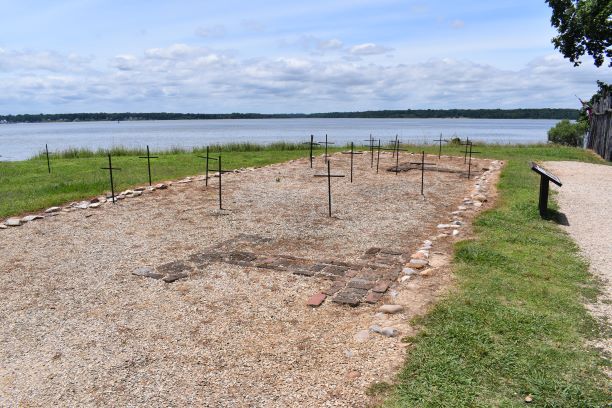
The captain of the supply ship, Thomas Gates, realized they still did not have enough supplies. In June 1610, he announced they were going to abandon the colony and they began to sail downriver. They were met by more of the supply ships and the new Governor of the colony, Lord De la Warr (pronounced like “Delaware”) who ordered them back to Jamestown.
Jamestown: Under New Management
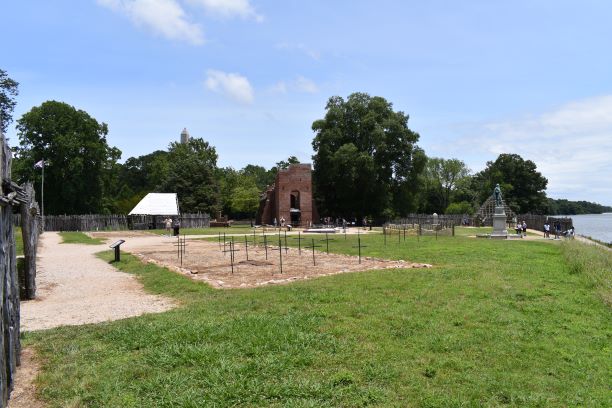
It’s funny how some things never change. Unsympathetic to the plight of the first months, investors back in Britain weren’t happy with the lack of returns coming from the Jamestown colony (where is all the gold?!).
As a result, a kind of Colonial “restructuring” took place. A second charter was drawn up to change government of the colony. Under the second charter, Governor De la Warr was given much more power.
Additional supplies and colonists (including the first women) began to arrive and the colony slowly rebounded.
Pocahontas: Separating Fact from Fiction
The story of Pocahontas was greatly romanticized during the Victorian era, so much of what we hear typically comes from that period. The notion that she fell in love with John Rolfe and married him of her own accord is difficult to verify.
The tale that she saved John Smith from execution when he was captured by the Powhatan is also sketchy. Smith first recounted the tale years after it supposedly happened.
In reality, Pocahontas was a favorite daughter of Chief Powhatan, and she was kidnapped by the English in order to bargain with her father. Her father often married his daughters to other leaders in order to ally with them just as European royalty had done for centuries. It is likely he married Pocahontas, which was actually a nickname he gave her meaning “mischievous”, to a colonist as a way to establish a partnership with his neighbors.
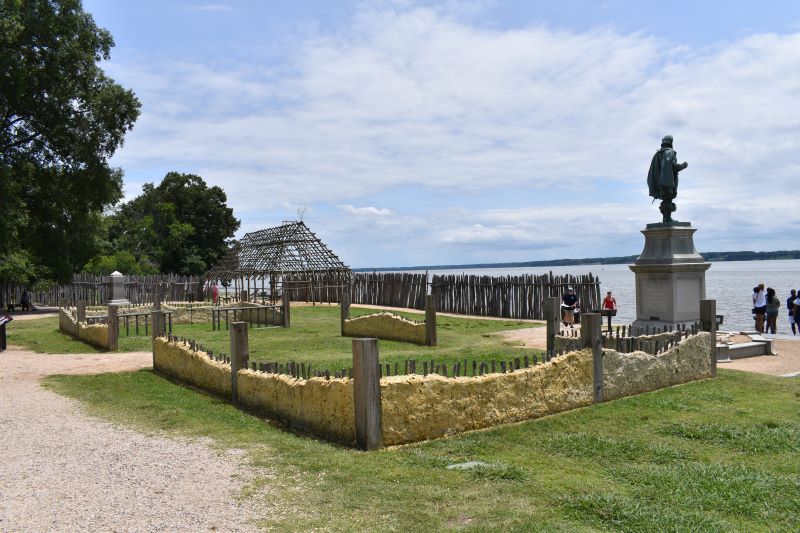
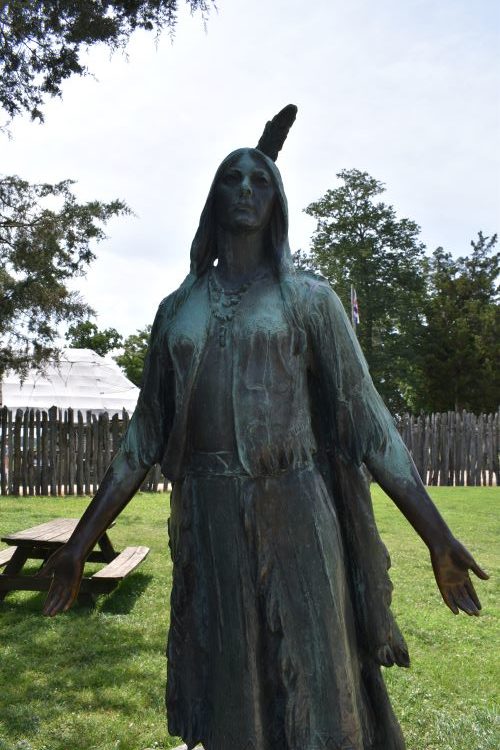
To a certain extent, marriage as a peace offering worked. Pocahontas’ 1614 marriage to John Rolfe led to a period of peace and prosperity for both groups. It worked out better for the colonists, however, as the peace allowed them to rapidly expand into Virginia, which ultimately damaged the Powhatan.
Pocahontas converted to Christianity and adopted the name “Rebecca”, which appropriately means “mother of two peoples”.
She and Rolfe had a son and the family traveled to London in 1616 to promote the colony to investors. She evidently was quite the sensation and was great propaganda for the Virginia Company to show how “civilized” the Indigenous people had become.
Sadly, she became ill in England and died there in 1617. Her son remained in England with relatives while Rolfe returned to Virginia.
1619: The First Representative Government in the Americas is Established at Jamestown
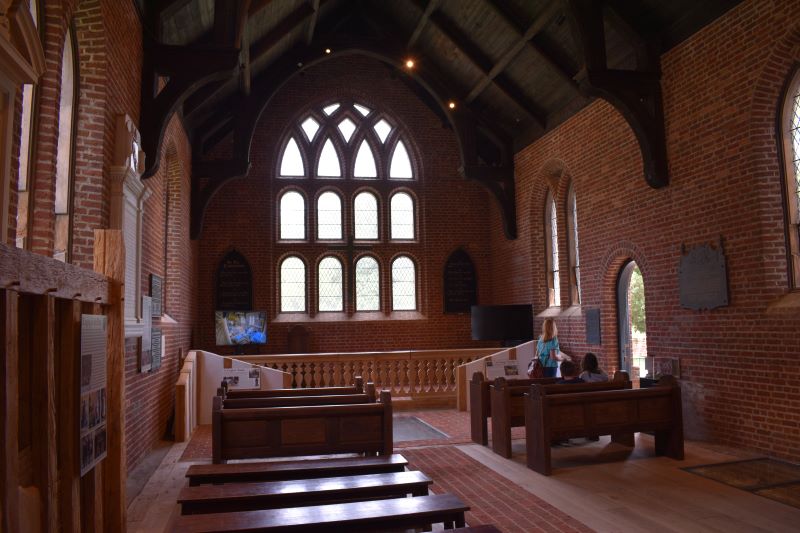
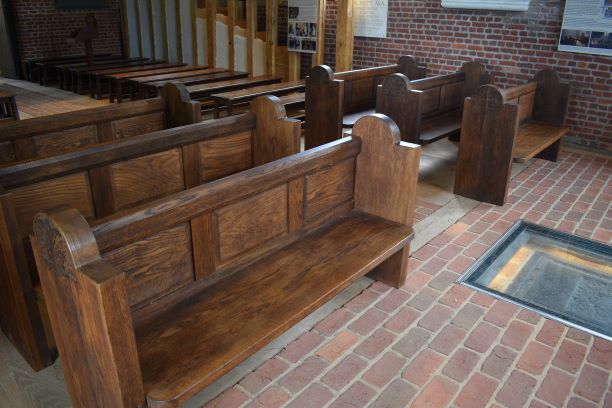
The martial law rule of the second charter was causing a good deal of strife in the colony, so a third charter was drafted. This one allowed for more self-governance.
The colonists were instructed to establish an “equal and uniform government all over Virginia”. The General Assembly was comprised of the Governor, his 4 councilors, and 22 representatives (“Burgesses”) of white, male landowners from across the colony of Virginia.
I didn’t realize the first representative assembly in the Americas was established right here in Jamestown. The monarch still had ultimate rule, but to give the local population more say in how to govern was a big step. It became engrained in our American identity, which is why local representation became such a flashpoint that led to the Revolutionary War 150 years later.
The Assembly continued to meet in the church until the 1630’s when they began to meet in private homes instead. By the 1660’s a purpose-built facility was needed and in 1665 the General Assembly met in the statehouse they had built.
The statehouse was destroyed in a fire in 1698. Today, the Archaearium archeology museum has been built over the foundations, which are marked inside the museum on the flooring. It’s a nice touch!
"James Cittie" grows outside the Fort
Following the establishment of a central government, a “New Towne” quickly grew up around the Fort and Jamestown became a bustling port city. A tavern, an inn and several homes sprang up around the new economy.
Most of these buildings have been lost to the centuries and the land was reclaimed for farming. In the 1930’s the National Park Service purchased the land and began excavating. They placed brick foundations on the site of the various buildings and restored the lanes and ditches that marked territory lines.
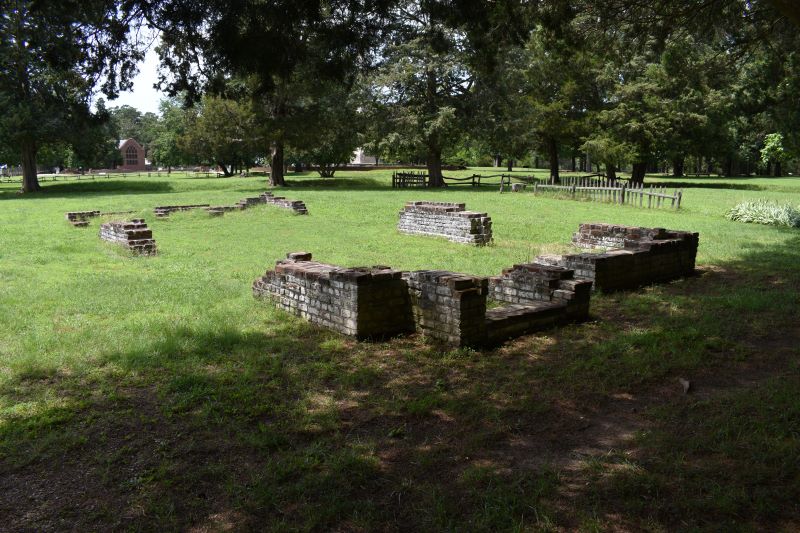
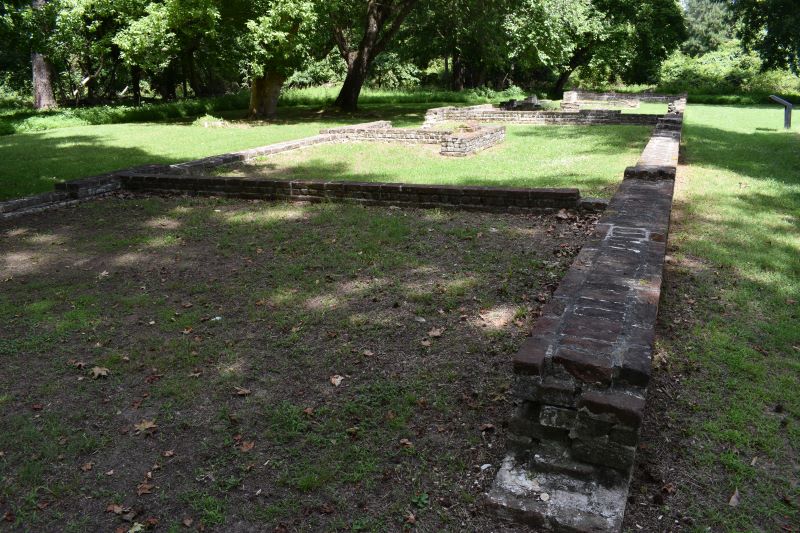
Tobacco to the Rescue
Sadly, the explorers never found the gold and gemstones they were seeking in Virginia. They did, however, discover that tobacco grew really well in the new colony.
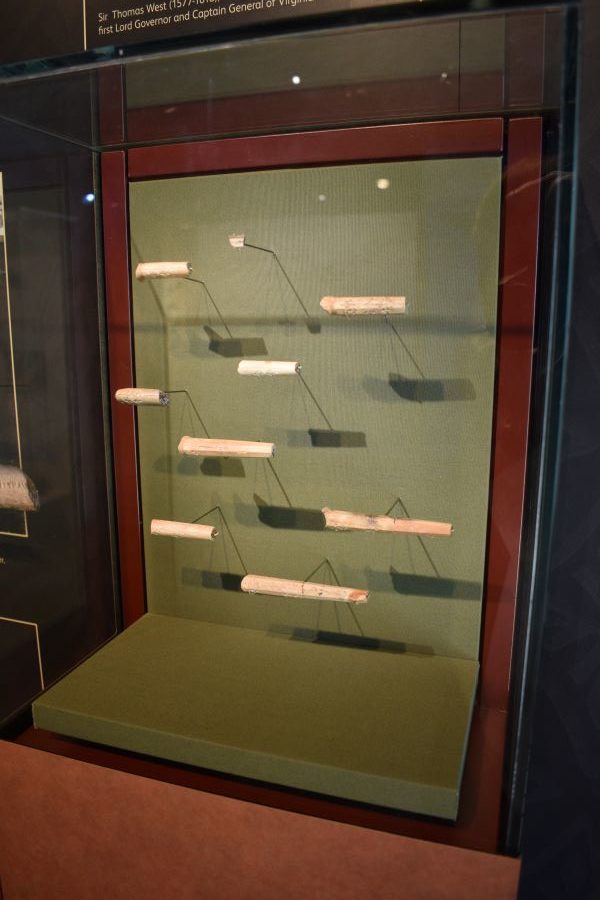
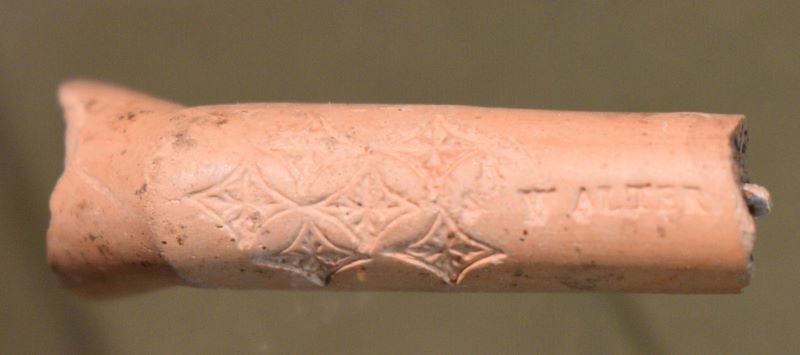
King James was not a fan of smoking but the practice was taking off in England. The Spanish had long monopolized the tobacco trade, so finding their own source was a windfall to the British.
The lure of tobacco riches meant colonists needed more laborers to work the farms. In 1619, a British privateer ship attacked a Portuguese ship and boarded it to steal their cargo. What the men found was more than just riches and spices.
By this time, the Portuguese had an established slave trade (which is really well covered at the Jamestown Settlement museum), and the privateers took several slaves as part of their bounty.
The privateers sold the men to the Virginia colony and the slave trade began in the Colonies. The repercussions of slave labor is still raw and painful 400 years later.
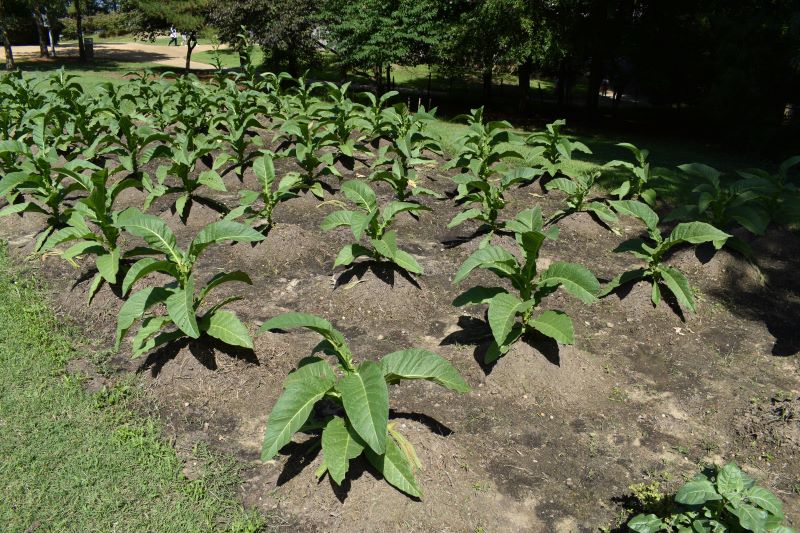
The Virginia Company is No More
By 1622 Powhatan and Pocahontas were dead and relations between the colony and Indigenous people began to degrade. More than 300 colonists at Jamestown were killed by a group of Powhatan warriors.
An inquiry was held in England to investigate and the London Company was found to have number of faults and mismanagement. As a result, the charter for the London Company was revoked and the site reverted from the shareholders to the crown.
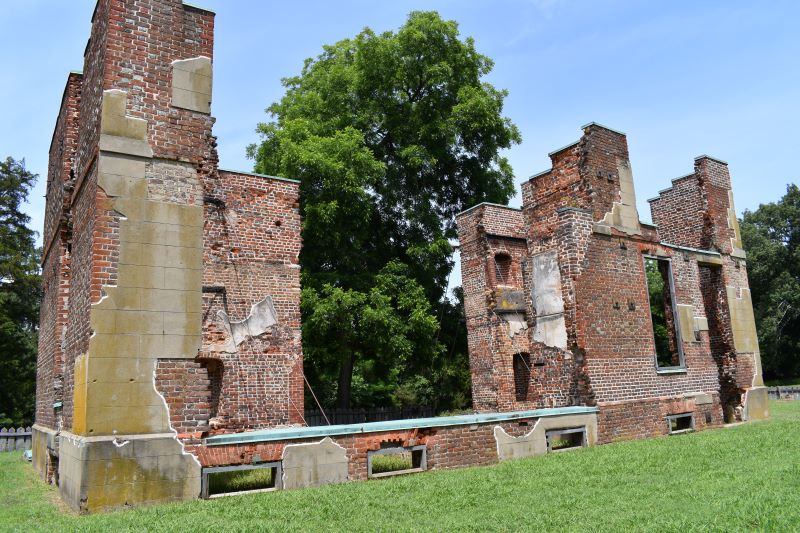
By this stage, the colony of Virginia was well settled and had grown to nearly 50,000. Other colonies had also been established, and by the 1670’s competition for goods from Maryland and the Carolinas were hurting Williamsburg’s economy. The once bustling harbor town began to lose its influence.
After the statehouse burned down in 1698, the decision was made to move the capital of the Virginia Colony to what is now Williamsburg.
The land at Jamestown slowly began to consolidate under a few powerful families, and buildings were demolished to make way for farmland. During the Civil War, Confederate troops leveled most of the remaining buildings to create an earthen fort for a cannon battery. Over time much of the site fell to ruin or was demolished.
In 1934, the New Town site was acquired by the National Park Service. Archaeological excavations didn’t begin until the 1990’s to try and locate where the original Fort was. The organization which owns the Fort is separate from the National Park site, so just be aware that you will have to pay the entrance fee here even if you have a National Park pass.
For a really good primer, I recommend American Heritage History’s book “Early America: 1492-1776”. It’s definitely broad strokes, but it does a great job distilling down what was going on in the world at the time that was driving colonization. I’m not sure if it’s still in print but you can find it and other good reads here.
What to See When You Visit Jamestown Today
Historic Jamestown
Jamestown was a bustling town for most of the 1600’s but became more rural and agricultural once the capital moved to Williamsburg in 1699. Buildings were torn down for farmland or damaged into ruins during the Revolutionary and Civil Wars until not much remained above ground.
Since the 1800’s local lore had claimed the fort built by the first settlers of Jamestown had been overtaken by the James River and lost forever. River erosion was a definite problem, and a concrete seawall was installed in the early 1900’s to prevent further loss.
Fast forward to the 1960’s when a graduate student from the College of William & Mary visited the site. The student, Dr. William Kelso, wondered if the fort would have been built near the 17th century church tower which was the only remnant from the colony.
After much research & fund-raising, he returned in 1994 leading the new Jamestown Rediscovery project. Within three exploration sessions the organization had uncovered enough evidence to prove most of the fort was still on dry land.
From there a massive excavation and exploration of the Fort began and you can see all the effort of their labor at Historic Jamestown. They also have a fantastic You Tube Channel, JamestownRediscovery, so definitely check out some videos before you go to get even more from your visit!
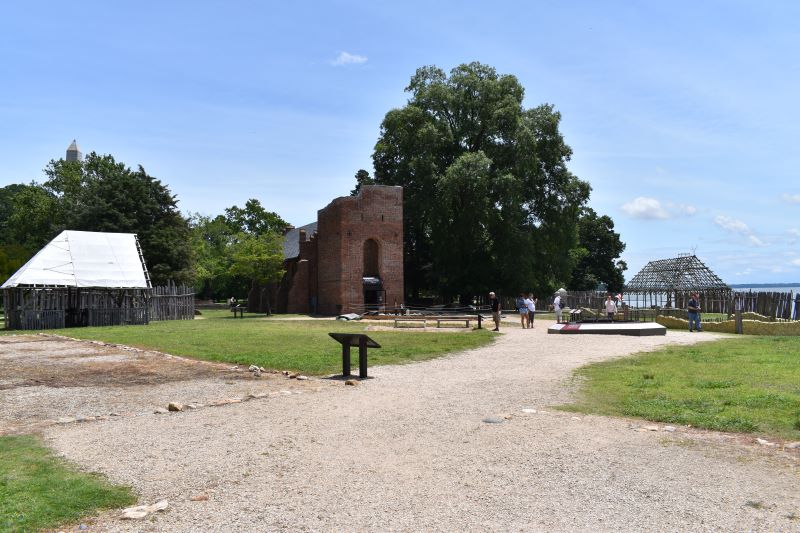
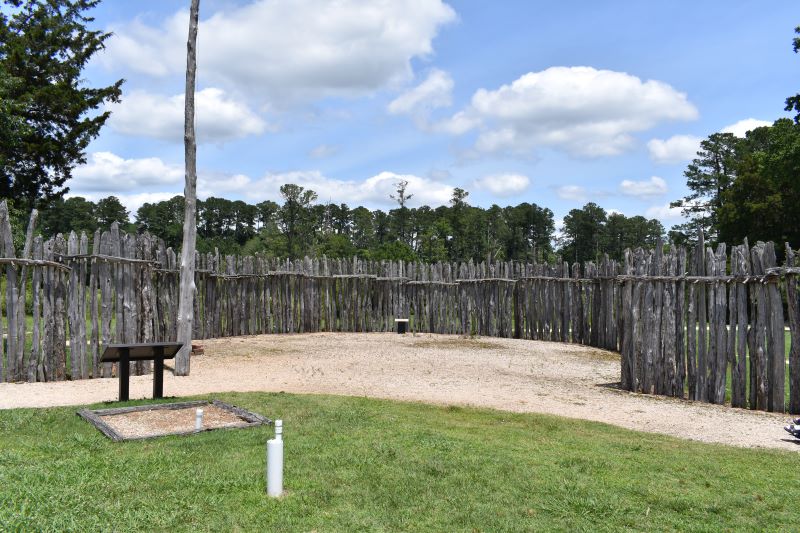
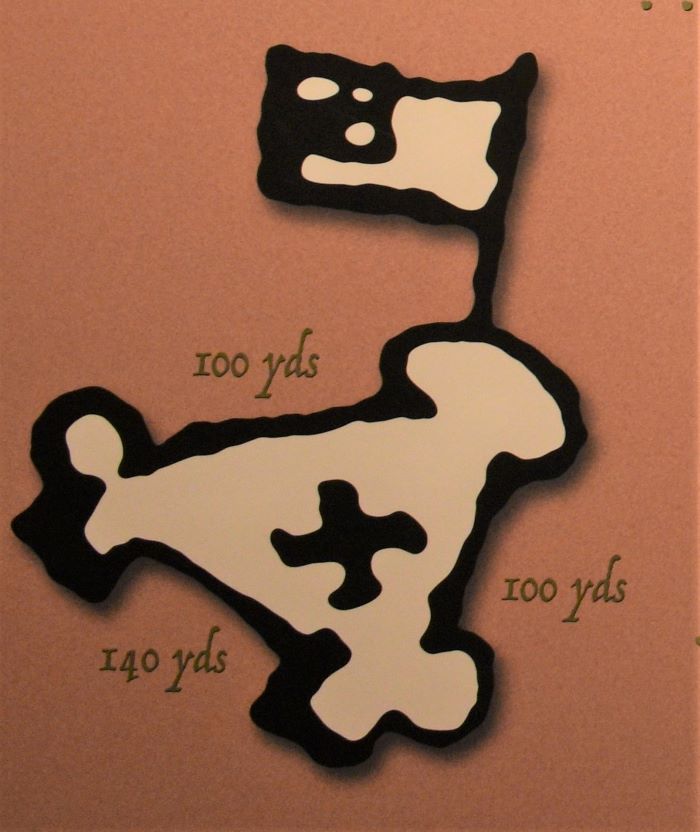
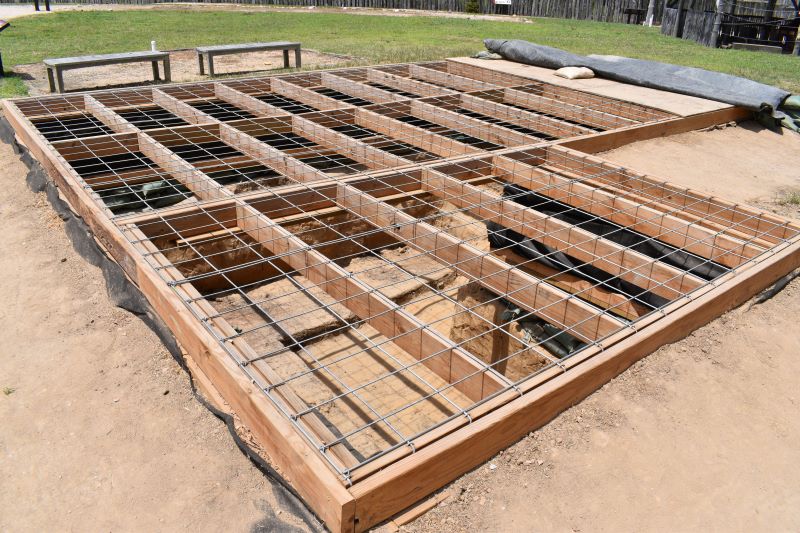
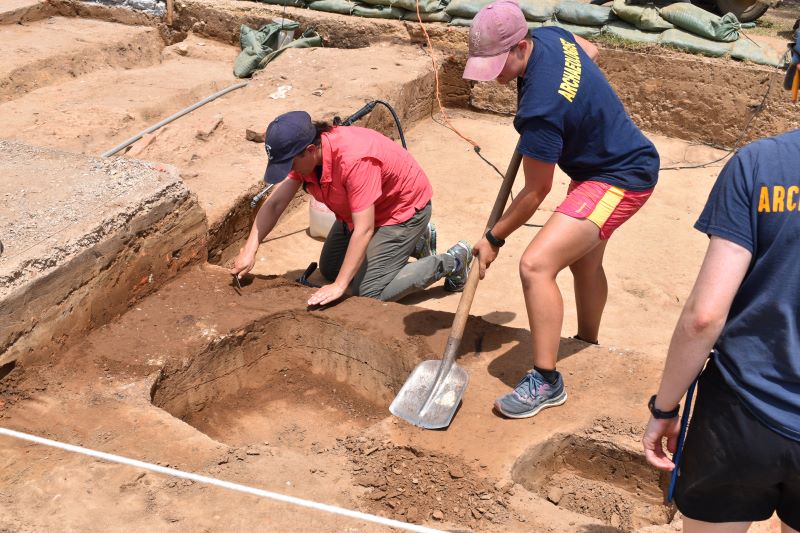
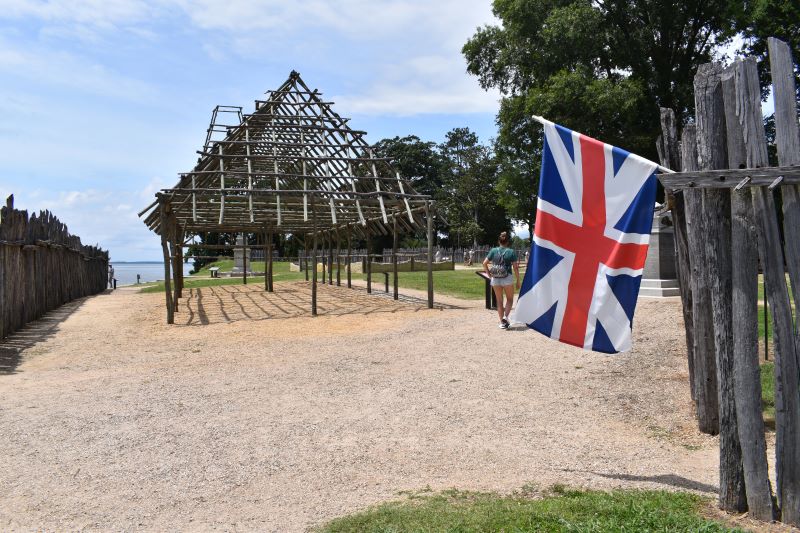
I spent 6 hours at the Historic Jamestown site, which included a fantastic guided tour. There will be a board when you buy your tickets which lists the tours of the day. I took the archaeology tour, which is led by one of the archaeologists. Highly recommended!
The archaeology museum is included in the price of admission, so don’t miss this treasure trove of artefacts found on site. It’s also air conditioned if it’s a hot or rainy day! The sign on the door says photography is not allowed, but as I left, I heard the woman at the front desk say that only applied to the room with the skeletons out of respect. So I looped back though and snapped some pics. It’s an incredible museum!! It’s also the only place I found with souvenirs at the site.
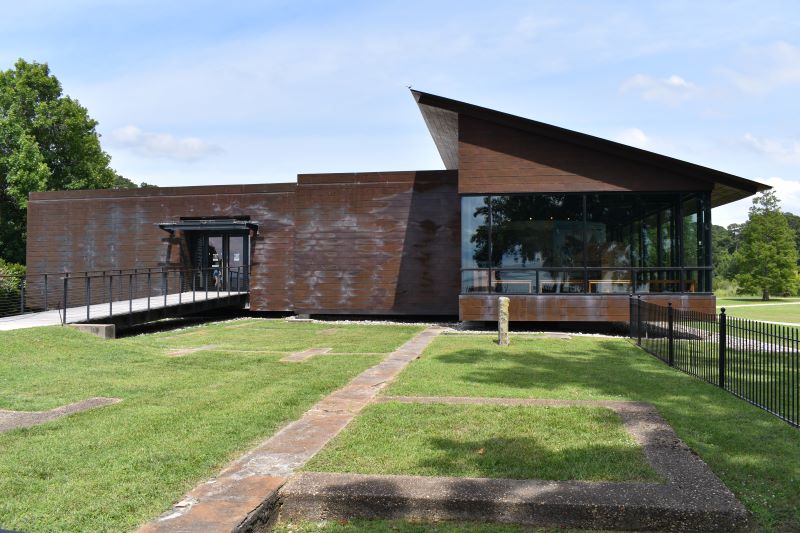
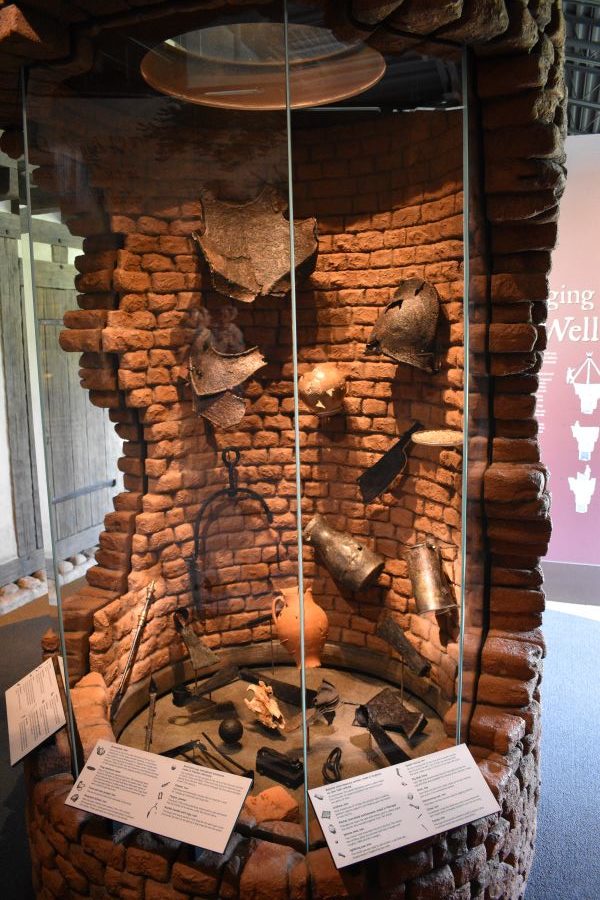
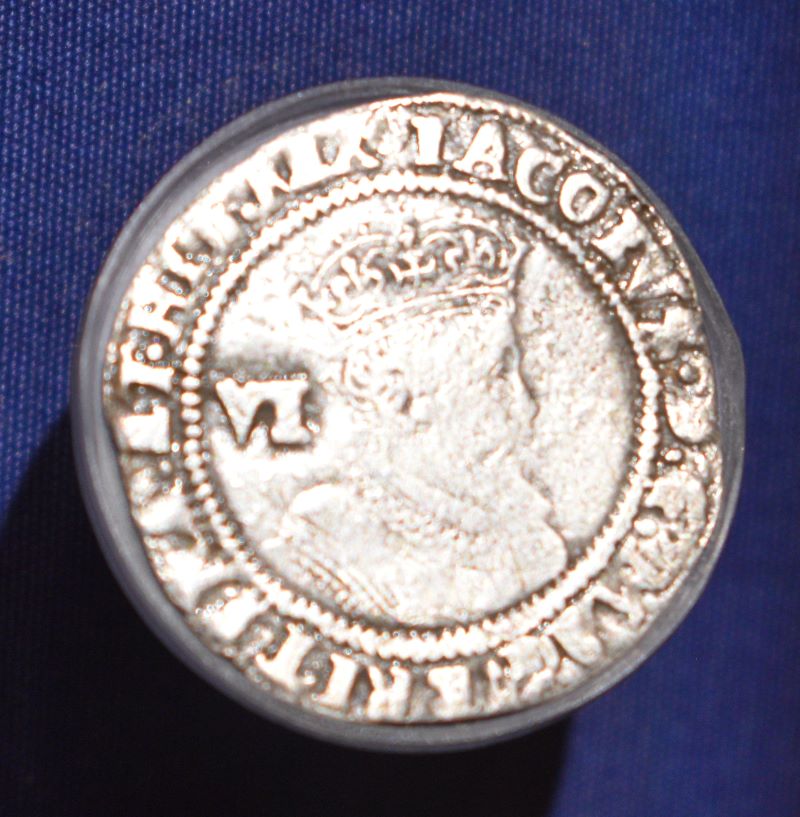
There is a really good cafe between the fort and the museum. Portions are huge so plan accordingly! I had lunch there and went back later in the afternoon for ice cream.
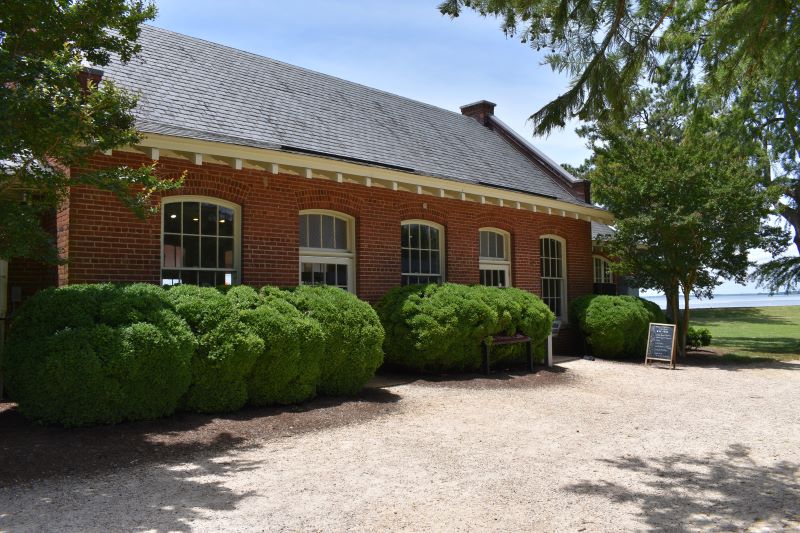
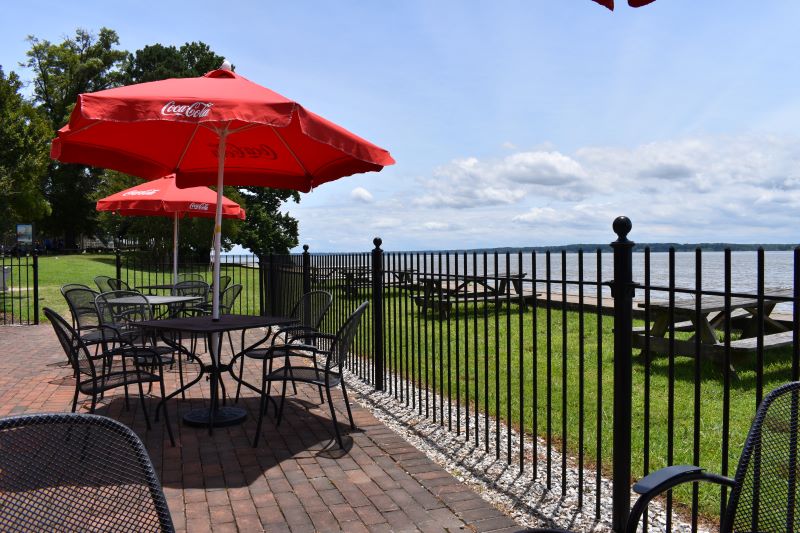
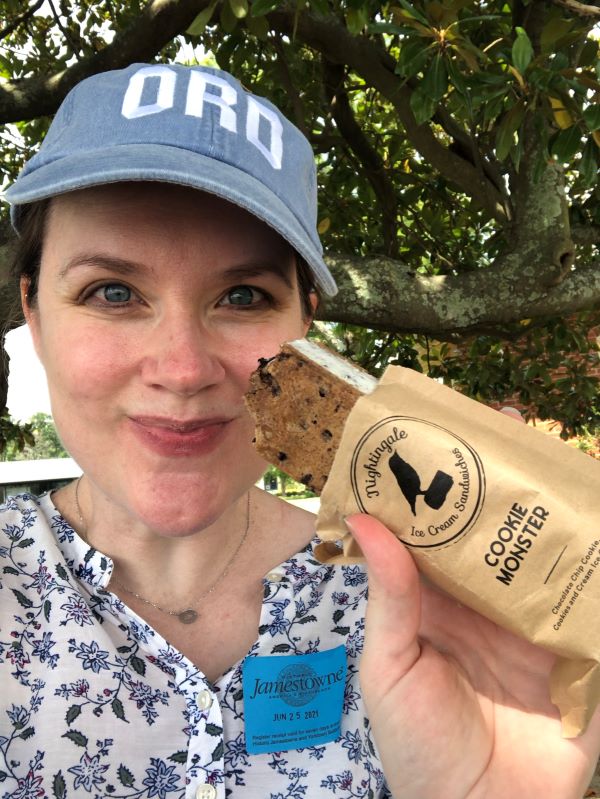
For kids, there was a fun colonial weapons demonstration and drill training with “Captain Brewster” they could participate in. Again, check the board for times.
The New Town section was a little harder to engage with, though there are some informative signs to help explain what you see as you walk around. Many are damaged, though, so sometimes you don’t get the full story!
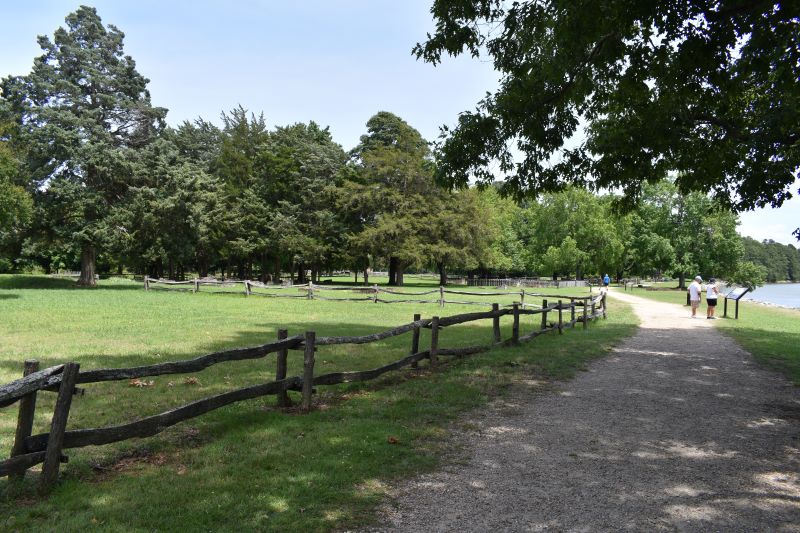
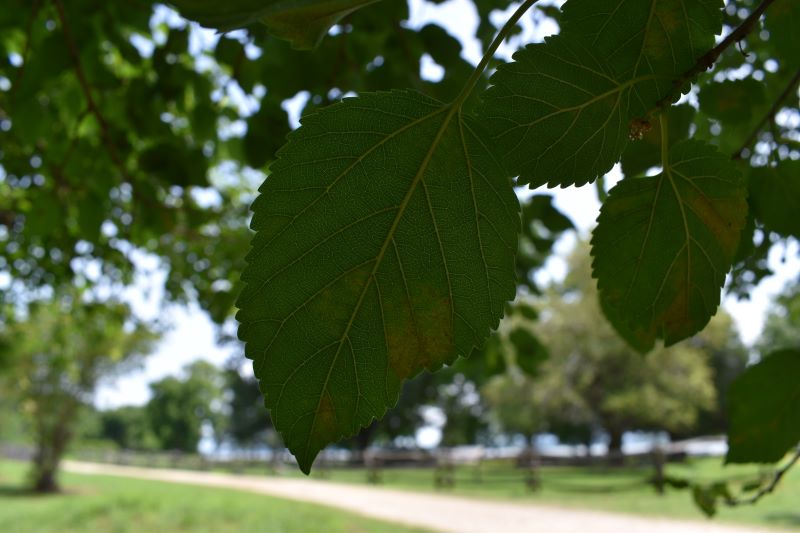
Visit the Jamestown Settlement
Jamestown Settlement is a living history museum near the actual site. From here you’ll get a full download of the history of the site. There are lots of activities and entertainment for kids if you have little ones in tow. There is a great museum and films inside, but don’t miss the living exhibits outside!
From the museum, follow the path to the right and you will come to a recreated village of the Paspahegh, described as a “tributary tribe” to the Powhatan. The site gives you an idea of how groups under the Powhatan umbrella operated.
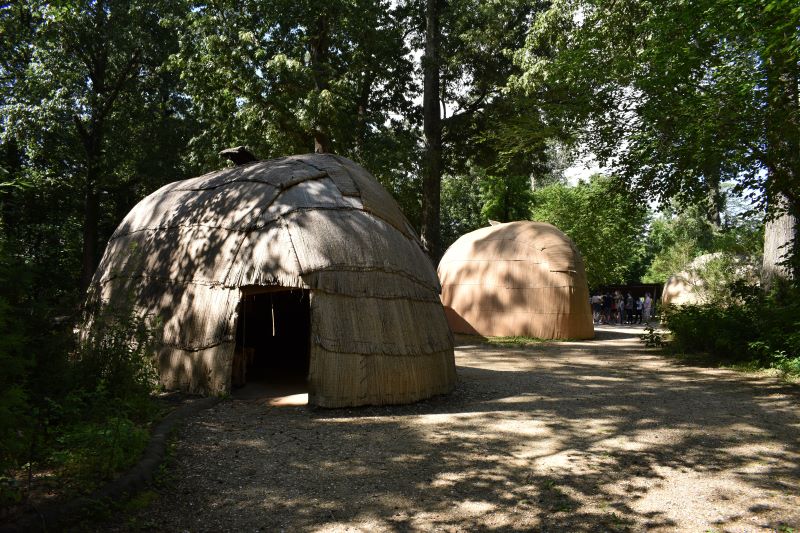
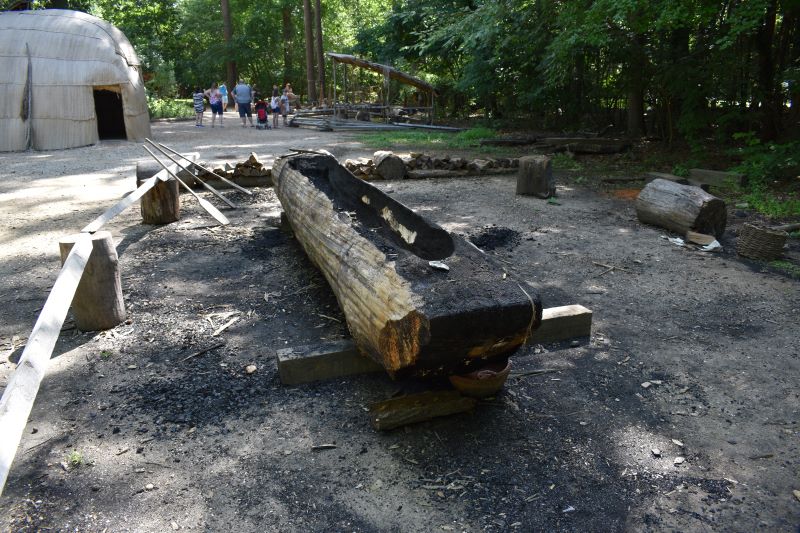
Once you leave the Powhatan Village, you come to the harbor where three replica ships built to scale show you how the first colonists arrived in the New World in 1607.
Depending on the day, you can board and explore the Susan Constant, Discovery and/or Godspeed. Imagine living on these ships for 4 months. They stopped at a few islands along the way to replenish supplies, but that’s still a long time to be on a ship!
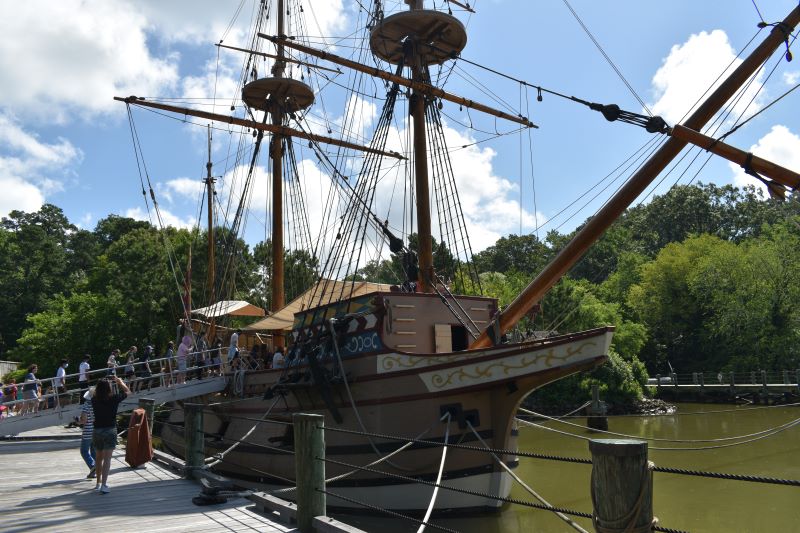
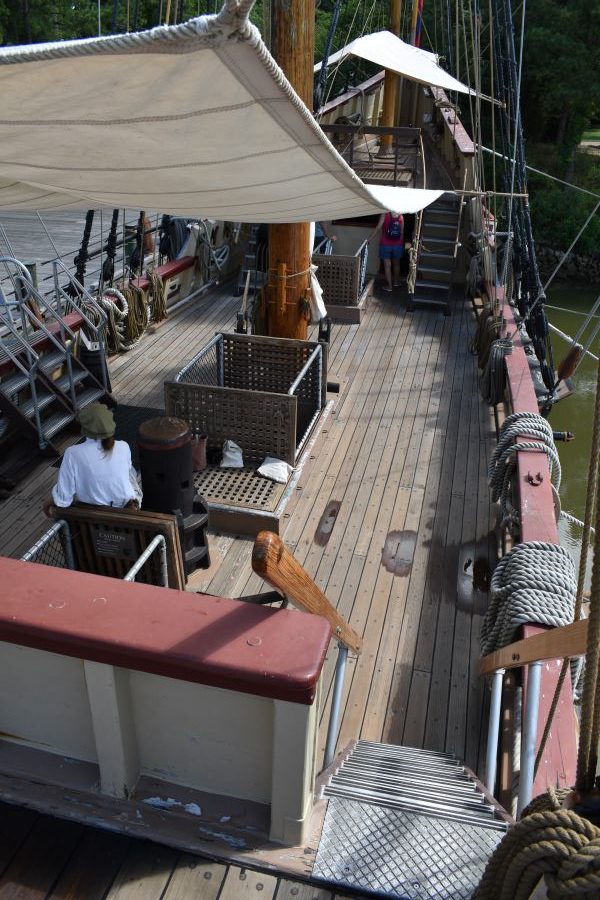
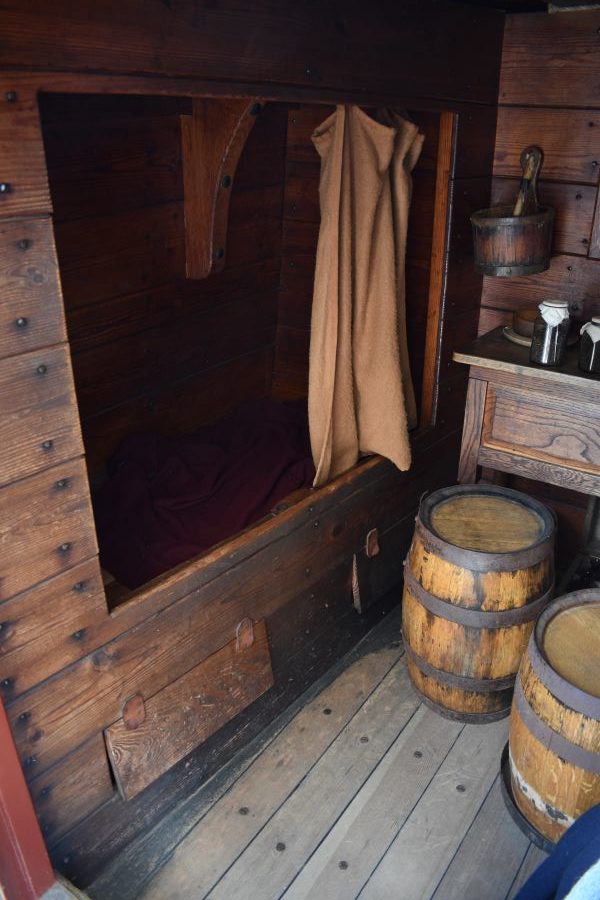
The final section of the outdoor living history section is the full scale replica of the Jamestown Fort. It was first built in the 1950’s, so given that the actual fort was still believed to have been lost to the James River at this point in history, they did a great job recreating the site!
Remember, Jamestown was a business venture, so there are pretty detailed records of what was on site, so the Jamestown Settlement recreation was based on those records. One of the historical interpreters also told me they update the site as excavations on the actual site uncover new details.
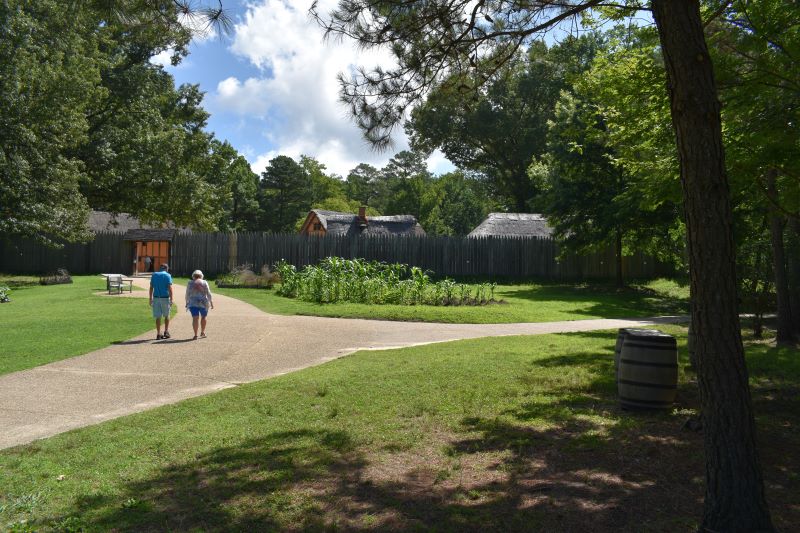
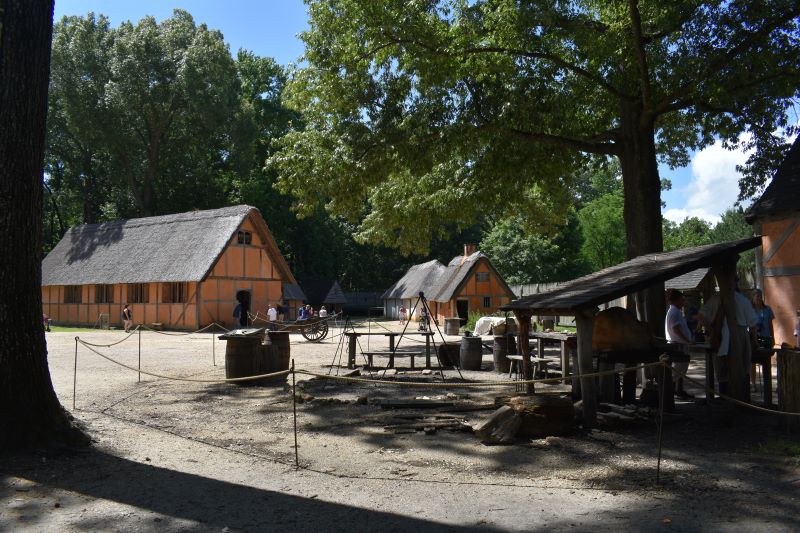
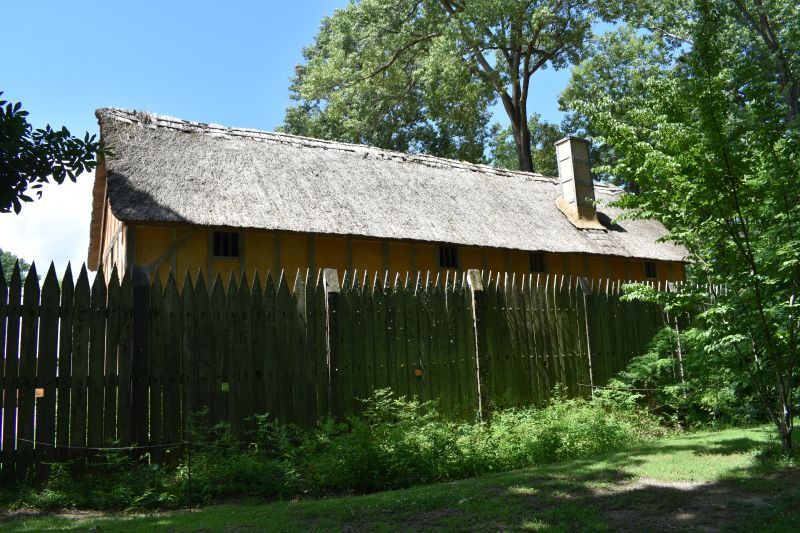
Inside the Jamestown Settlement museum, you’ll get a great history of the Jamestown colony, the introduction of slavery to America and a look at the lives of Indigenous people and women of the period.
There are also a few videos that are worth taking the time to watch at the site. “1607: A Nation Takes Root” is a nice historical overview. The film “Bacon’s Rebellion” is a fun film with surround sound, lights and fog to immerse you in the story.
There is a cafe at the Jamestown Settlement with a nice variety of sandwiches, salads and pizza. There is also a gift shop to get your favorite souvenirs.
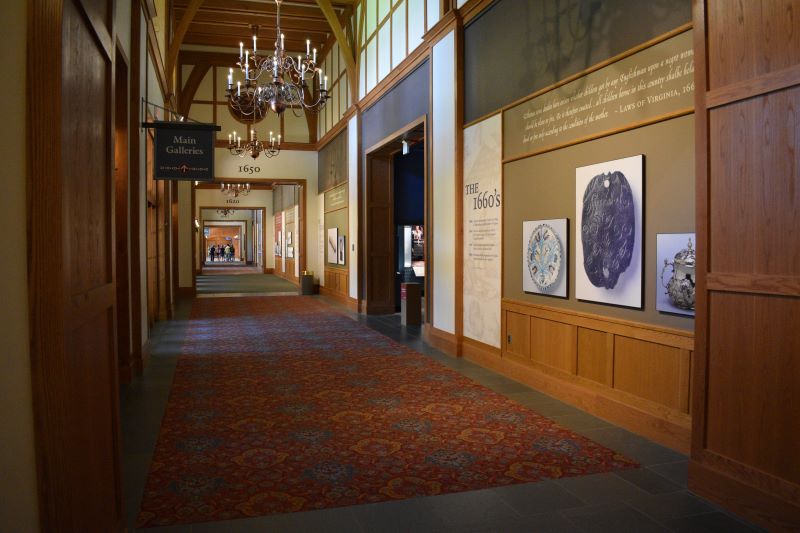
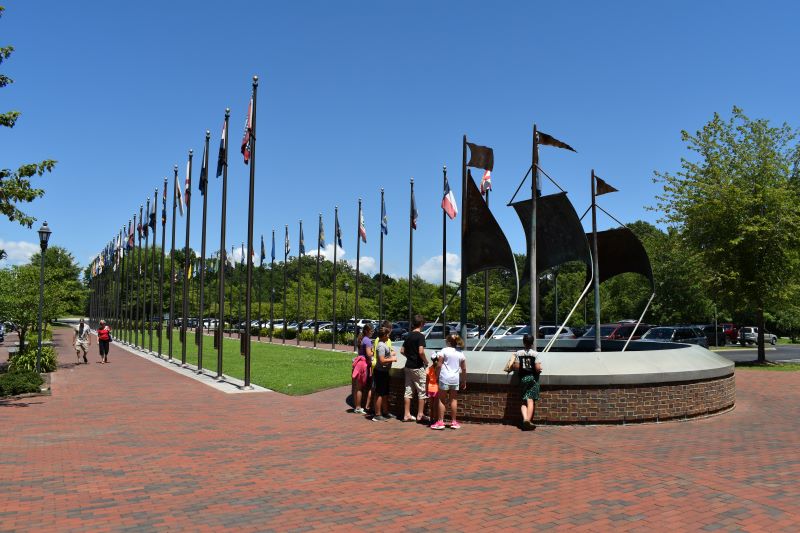
Bonus Site for Your Trip to Jamestown: Ride the Jamestown-Scotland Ferry
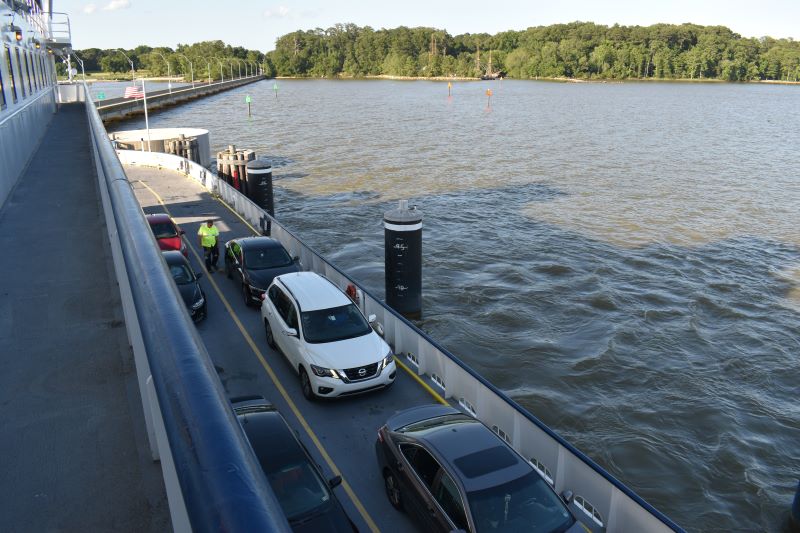
From the Jamestown fort, I kept seeing a boat going back and forth over the river. A quick Google search revealed there is a free automobile ferry that runs between Jamestown and Scotland on the other side of the river!
The ferry runs 24 hours a day, 365 days a year. I thought it would be a fun way to see the fort from the perspective of the river.
The trip only takes 10-15 minutes, and you can either continue on to other sites or get in line to take the ferry back to Jamestown.
During the journey you can get out of your car and walk around. There is a viewing deck up above the cars and bathrooms on board.
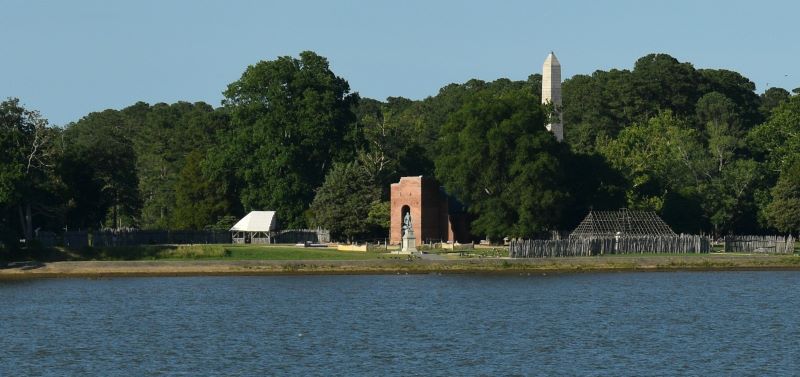
First Landing State Park
When the English ships finally arrived in 1607, this was the spot they landed at. They named the site “Cape Henry” in honor of King James’ son. From here, they explored the river (which they christened the “James River”) and eventually selected the Jamestown site about 50 miles upriver.
Because it’s 50 miles away, it does take over an hour to drive to the beach from Jamestown. It’s only about 20 minutes from Norfolk airport, however, so if you are flying through that airport it’s an easy drive.
The beach itself is beautiful. It is the most popular beach in all of Virginia, so plan to get there early, especially on weekends or over the summer. There are miles of trails you can hike as well, though I didn’t have time during my visit since I had a flight to catch.
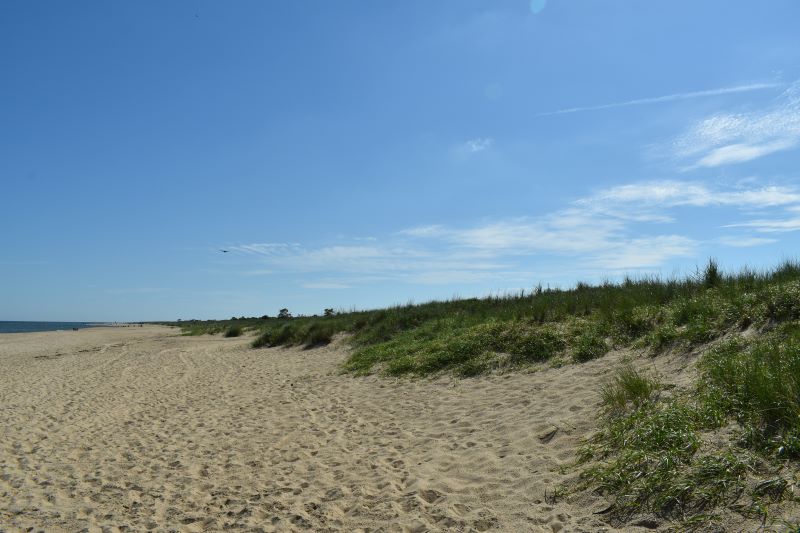
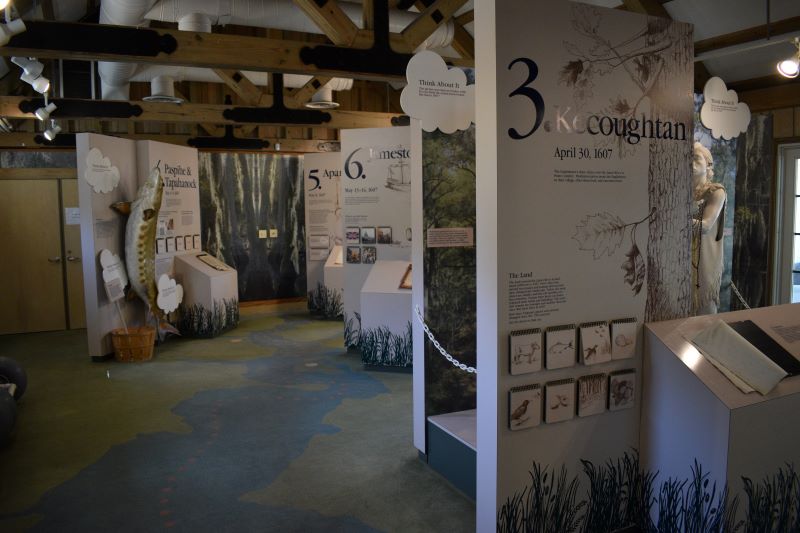
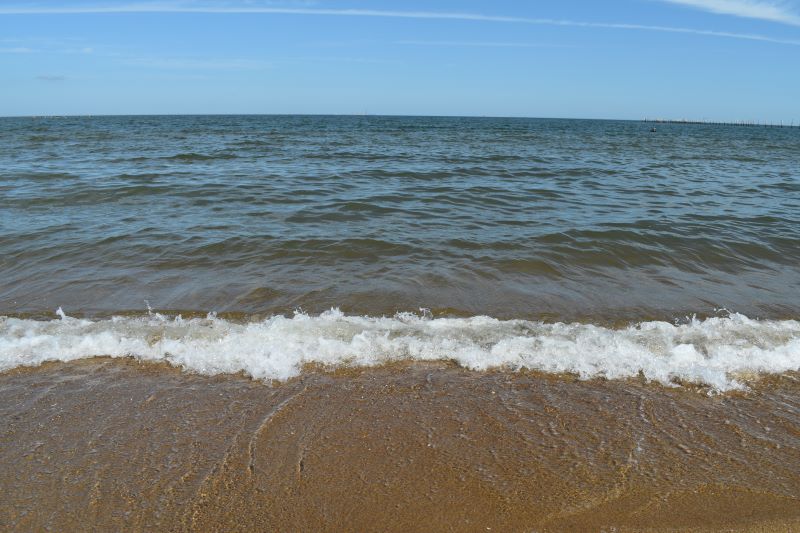
Got some extra time? Check out more Colonial history with a trip to Yorktown!
Post Sources:
[bg_collapse view=”link” color=”#4a4949″ icon=”arrow” expand_text=”Show More” collapse_text=”Show Less” ]
United States Library of Congress. “Colonial Settlement 1600s-1763” Accessed 11 June 2021.
World History Encyclopedia “Trade in Medieval Europe” by Mark Cartwright, 8 January 2019. Accessed 11 June 2021.
“The Virginia Company of London, 1606-1624” by Wesley Frank Craven. Project Gutenberg e-book. Accessed 11 June 2021.
Encyclopedia Virginia. “Colonial Virginia” Accessed 13 June 2021.
[/bg_collapse]

